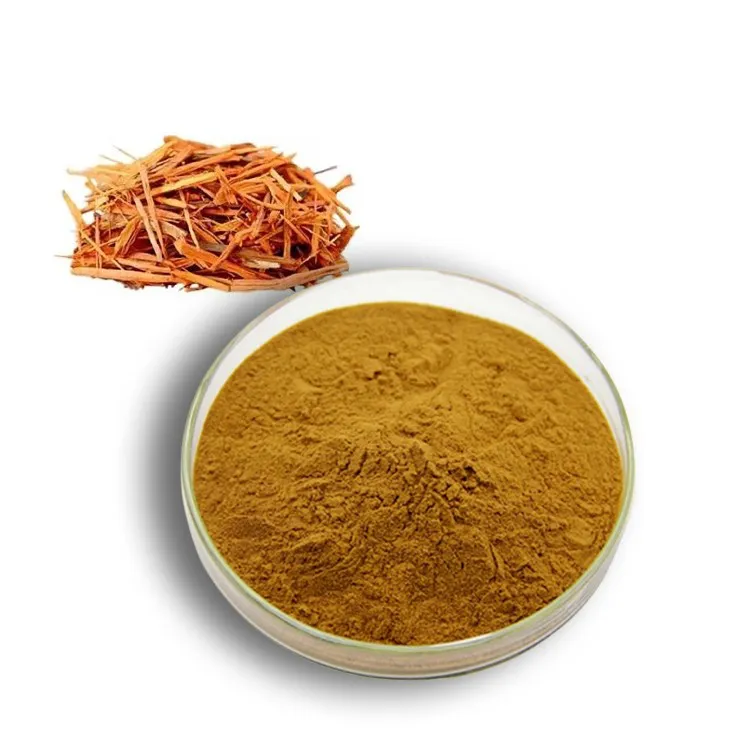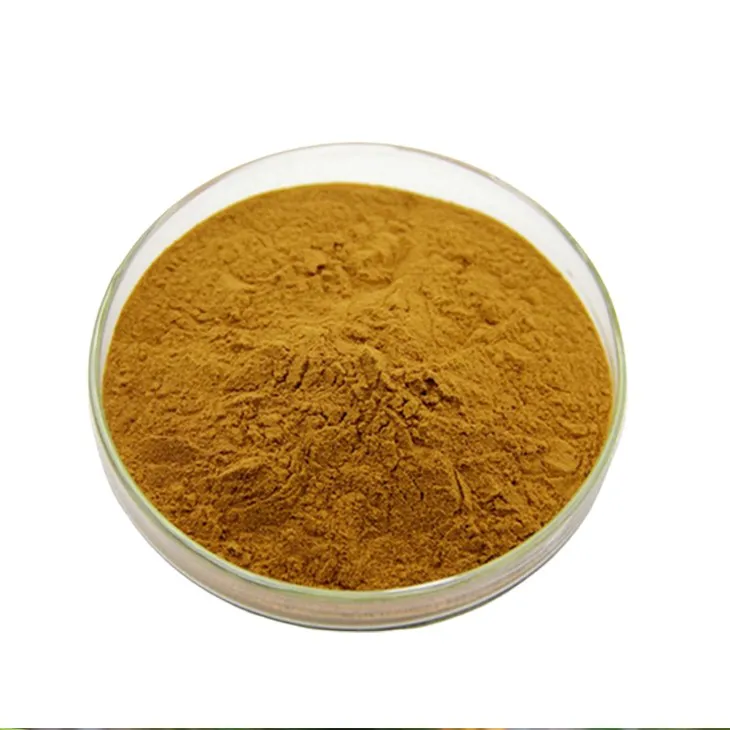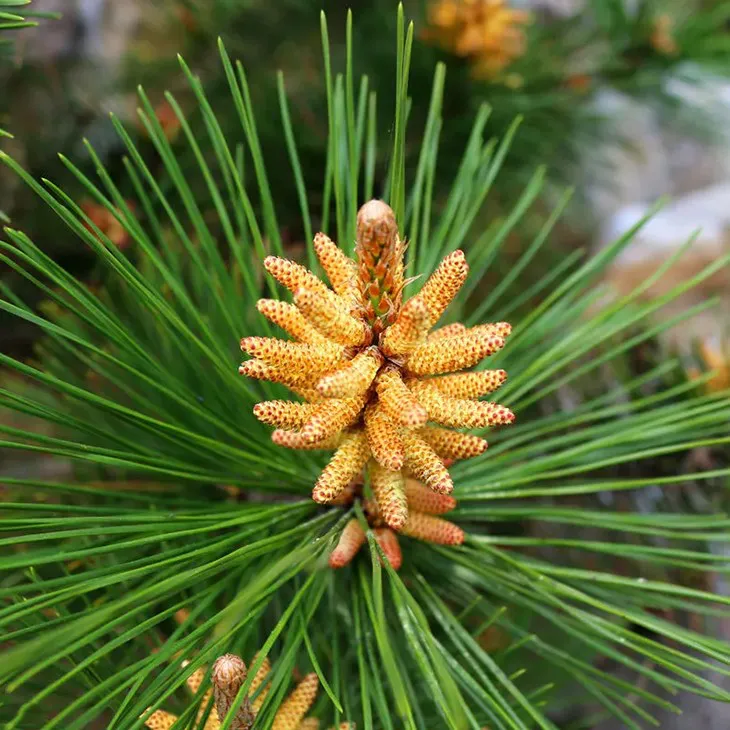- 0086-571-85302990
- sales@greenskybio.com
The Most Highly - Praised Yellow Pine Extract.
2024-11-30

Introduction
Yellow Pine Extract has been garnering significant attention in recent times. It is a substance that holds great potential across multiple domains. This extract, sourced from the yellow pine, is not just another natural product but one that is on the verge of making a substantial impact in various industries.

Chemical Composition and Scientific Significance
Terpene Compounds: At the heart of the Yellow Pine Extract's scientific allure are the terpene compounds it contains. These compounds are responsible for the extract's unique aroma. From a chemical perspective, terpenes are a large and diverse class of organic compounds. In the case of Yellow Pine Extract, they are what give it a distinct smell that can range from earthy to resinous.
Therapeutic Potential: The terpene compounds also hold the key to the extract's potential therapeutic effects.
Antibacterial Activity
Some terpenes present in the yellow pine extract have shown antibacterial properties. In laboratory studies, they have been observed to inhibit the growth of certain bacteria. This is significant as it opens up the possibility of using the extract in the development of new antibacterial agents. For example, in the fight against drug - resistant bacteria, natural substances like yellow pine extract could potentially offer a new line of defense.
Antifungal Activity
Similarly, the antifungal activity of the terpene - rich yellow pine extract cannot be overlooked. Fungal infections can be a major problem in various settings, from agriculture to human health. The extract's ability to combat fungi makes it a valuable candidate for further research. It could be used in the development of natural fungicides, which would be more environmentally friendly compared to some of the synthetic alternatives currently in use.

Environmental Importance
The Yellow Pine in Ecosystems: The yellow pine, from which the extract is derived, plays a crucial role in forest ecosystems. It is a keystone species in many regions. These trees provide habitat for a wide variety of organisms. For instance, birds build their nests in the branches of yellow pines, and small mammals may use the tree cavities for shelter.
Sustainability Aspect: The connection between the yellow pine and its extract gives the latter an added dimension of sustainability. Since the extract is sourced from a tree that is an important part of the ecosystem, there is an incentive to manage the extraction process in an environmentally friendly way. This includes sustainable forestry practices such as selective logging, which ensures that the yellow pine population remains healthy while still allowing for the extraction of the valuable extract.

Economic Value
Opportunities in Forestry and Extraction Industries: The increasing demand for yellow pine extract has led to new opportunities in the forestry and extraction industries. Forestry companies are now looking at ways to optimize the extraction process while maintaining the health of the yellow pine forests. This has led to the development of more advanced extraction techniques that are both efficient and environmentally friendly.
Use in Food Additives:
- The yellow pine extract is also being explored for use in food additives. Its potential to enhance the flavor of food products is an area of great interest.
- It may also provide certain health - promoting properties. For example, it could potentially act as a natural antioxidant in food, helping to prevent spoilage and improve the shelf - life of products.
Conclusion
Yellow pine extract is truly a remarkable substance. Its scientific, environmental, and economic aspects all contribute to its status as one of the most - praised extracts. As research continues, it is likely that we will discover even more applications and benefits associated with this extract. It is important, however, to ensure that any further development and utilization of yellow pine extract are done in a sustainable and responsible manner, taking into account all the factors that make it such a valuable resource.
FAQ:
What are the main components of yellow pine extract?
Yellow pine extract contains terpene compounds. These terpenes contribute to its unique aroma and may also have potential therapeutic effects such as antibacterial and antifungal activities.
How does yellow pine extract play a role in environmental protection?
Yellow pine, from which the extract is derived, is important in forest ecosystems. This connection gives the yellow pine extract an added dimension of sustainability.
What economic opportunities does yellow pine extract bring?
The increasing demand for yellow pine extract has led to new opportunities in the forestry and extraction industries. It is also being explored for use in food additives, which can enhance its economic value.
What are the potential health - promoting properties of yellow pine extract?
It may have antibacterial and antifungal activities. Also, as it is being explored for use in food additives, it may provide certain health - promoting properties, though more research is needed to fully understand these effects.
Why is yellow pine extract highly - praised?
It is highly - praised because of its terpene compounds with potential therapeutic effects, its connection to environmental sustainability, and the economic opportunities it brings, as well as its potential use in food additives with flavor - enhancing and possible health - promoting properties.
Related literature
- Study on the Terpene Compounds in Yellow Pine Extract"
- "The Role of Yellow Pine in Forest Ecosystems and Its Extract"
- "Economic Impact of Yellow Pine Extract in the Modern Industry"
- ▶ Hesperidin
- ▶ Citrus Bioflavonoids
- ▶ Plant Extract
- ▶ lycopene
- ▶ Diosmin
- ▶ Grape seed extract
- ▶ Sea buckthorn Juice Powder
- ▶ Fruit Juice Powder
- ▶ Hops Extract
- ▶ Artichoke Extract
- ▶ Mushroom extract
- ▶ Astaxanthin
- ▶ Green Tea Extract
- ▶ Curcumin
- ▶ Horse Chestnut Extract
- ▶ Other Product
- ▶ Boswellia Serrata Extract
- ▶ Resveratrol
- ▶ Marigold Extract
- ▶ Grape Leaf Extract
- ▶ New Product
- ▶ Aminolevulinic acid
- ▶ Cranberry Extract
- ▶ Red Yeast Rice
- ▶ Red Wine Extract
-
Stevia Extract
2024-11-30
-
American Ginseng Root Extract
2024-11-30
-
Horse Chestnut Extract
2024-11-30
-
Shikone Extract
2024-11-30
-
Uridine-5'-monophosphate Disodium salt
2024-11-30
-
Panax Ginseng Leaf Extract
2024-11-30
-
Saponin Extract
2024-11-30
-
Almond Extract Powder
2024-11-30
-
Europen Bilberry Extract
2024-11-30
-
Polygonum multiflorum extract
2024-11-30





















